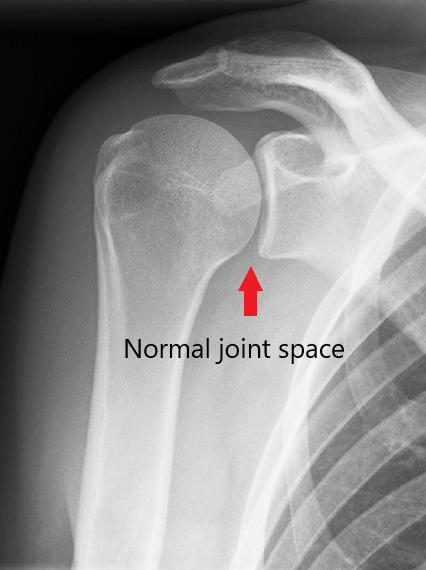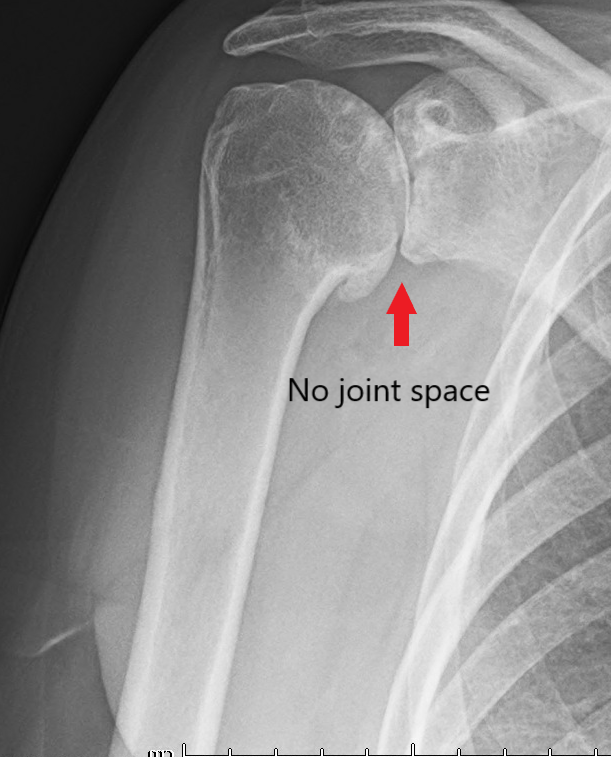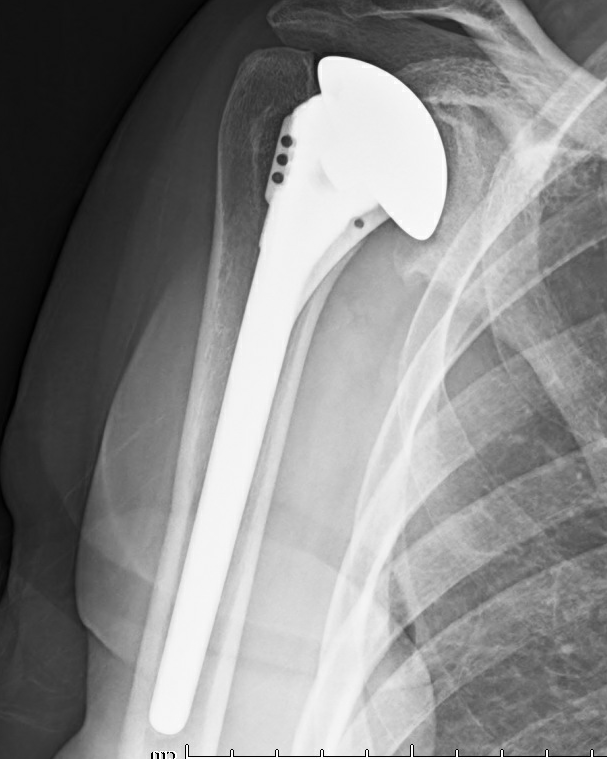Shoulder Arthritis
What is Shoulder Arthritis?
Glenohumeral/shoulder arthritis is the wearing out of the smooth cartilage lining of the ball and socket of the shoulder joint. It is a problem that does not resolve on its own and usually gets worse over time.
What causes Shoulder Arthritis?
Shoulder arthritis can be caused from overuse such as in a person who lifts heavy weights or in a person who works as a laborer. It can also be caused by autoimmune problems such as rheumatoid arthritis. Sometimes it happens years after an old injury.
What are the symptoms Shoulder Arthritis?
The main symptoms of shoulder arthritis are shoulder pain, loss of range-of-motion, and a loss of function.
How to find out if you have Shoulder Arthritis?
Both a physical exam by your doctor and an X-ray are needed to determine if a shoulder has arthritis (see picture). An MRI is usually not needed.
How is Shoulder Arthritis treated?
Treatment of shoulder arthritis can be surgical or non-surgical.
• Steroid injection: Sometimes an injection of medicine (cortisone/steroid) into the joint can be used to provide temporary relief.
• Physical Therapy: This can sometimes improve pain, but if it makes the shoulder arthritis more painful, it should be stopped.
If a person does not get better with injections and therapy, surgery is an option.
• Surgery: Surgery involves removing the worn out and rough ball (humeral head) and replacing it with a smooth metal ball (see picture). The surgery is called a shoulder arthroplasty, or a shoulder replacement.
The cup can be addressed in one of 3 ways:
- Leave the cup as it is. This is usually done if the cup is smooth and concave.
- Cover the cup with a plastic liner. As the plastic has a tendency to wear out this is usually done for people who do not to use their shoulder much.
- Biologic resurfacing (ream and run) to recreate a smooth cup out of the person’s own bone. This is usually done if the cup is rough and/or flat in a person who would like to get back to normal activities without worrying about wearing out a plastic liner.
Sometimes a “reverse shoulder arthroplasty” or a reverse shoulder replacement is useful. However this surgery has a high complication rate and should be used only as a last resort.
Arthroscopy is not often used since it does not seem to give lasting relief.
Regardless which type of shoulder replacement is performed, the patient must complete an intense therapy program starting the day of surgery. By 3 months, people are usually able to use their shoulder for many normal activities and people will continue to improve for up to a year and a half.

Normal Shoulder

Shoulder with Arthritis
